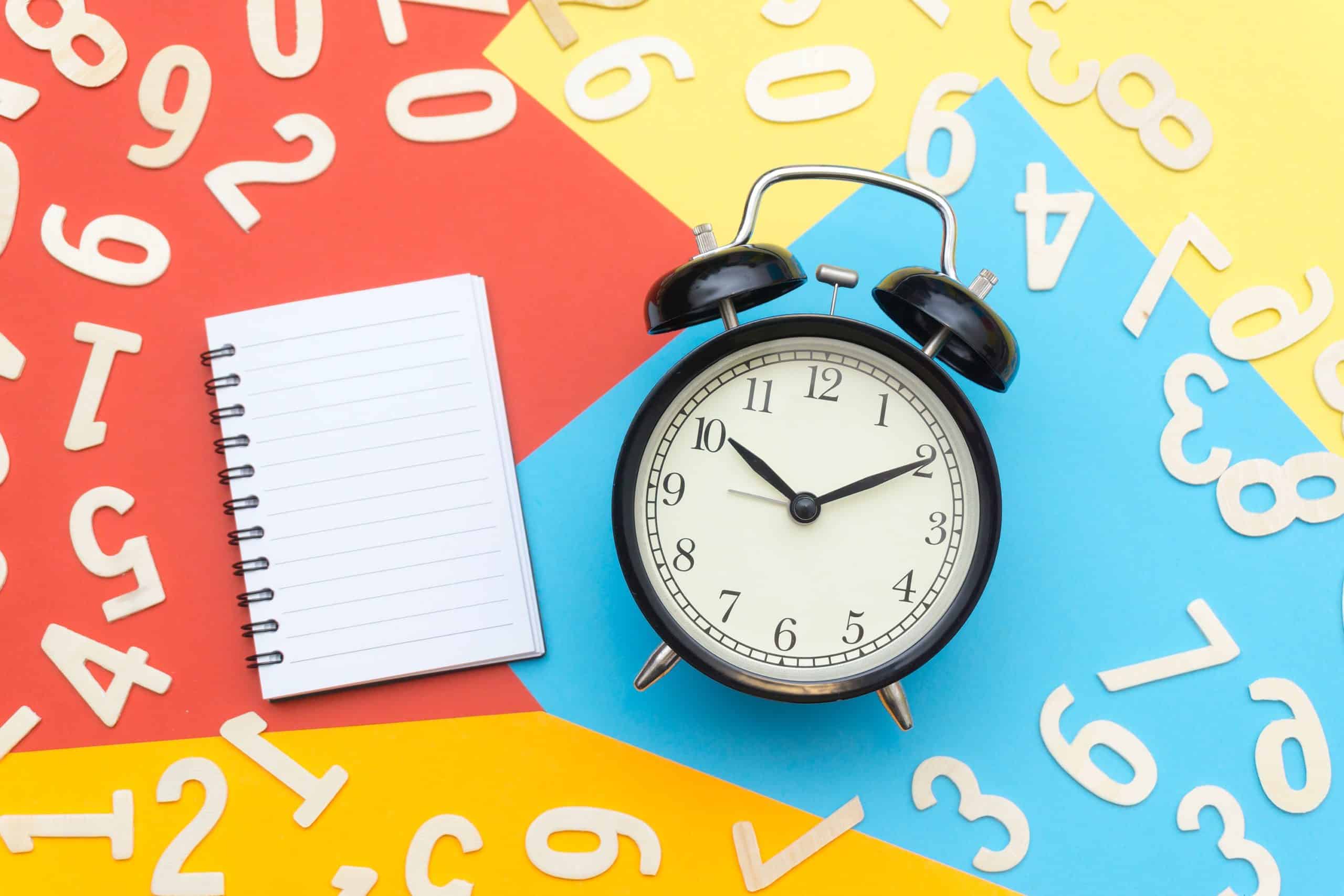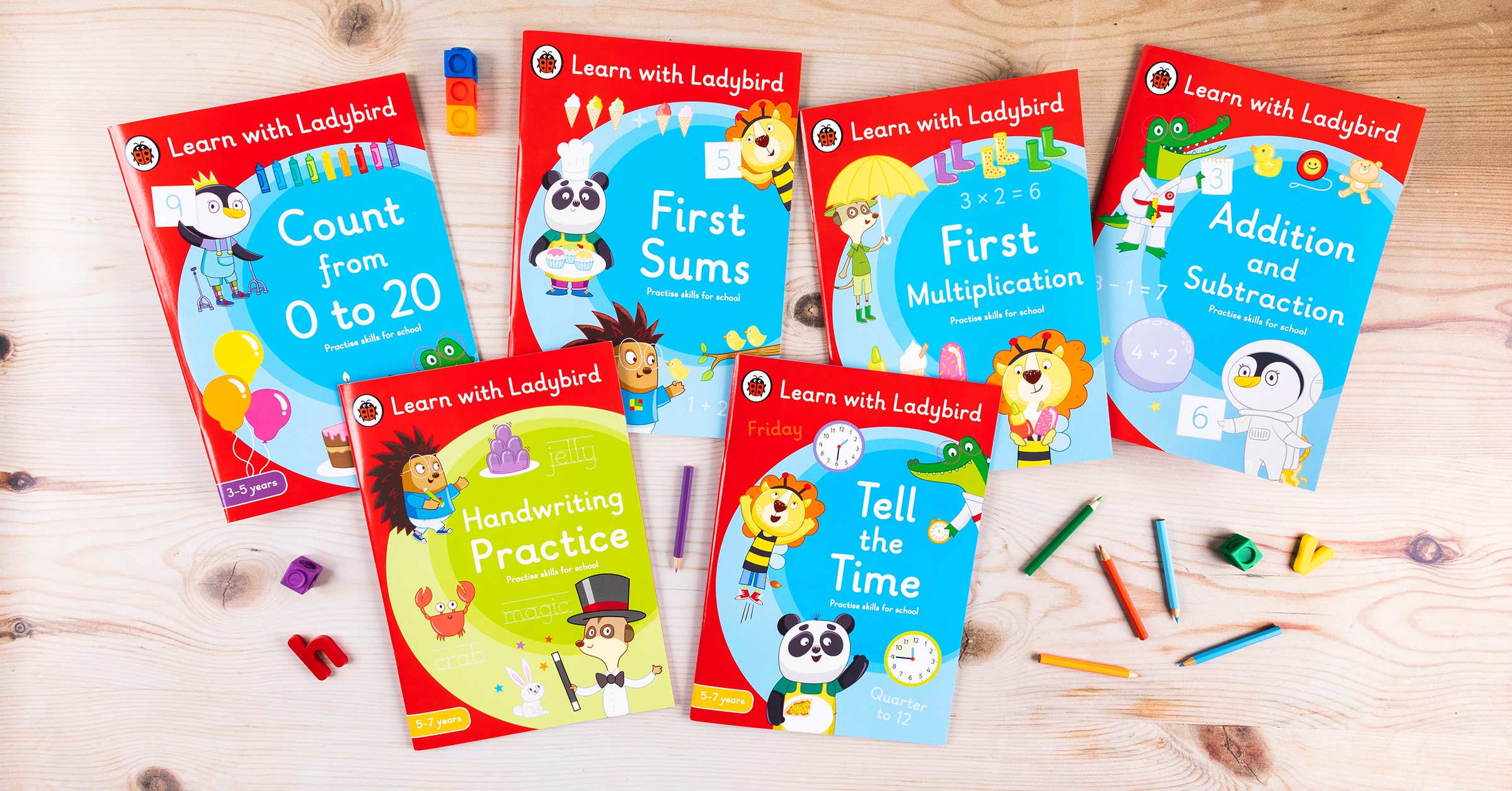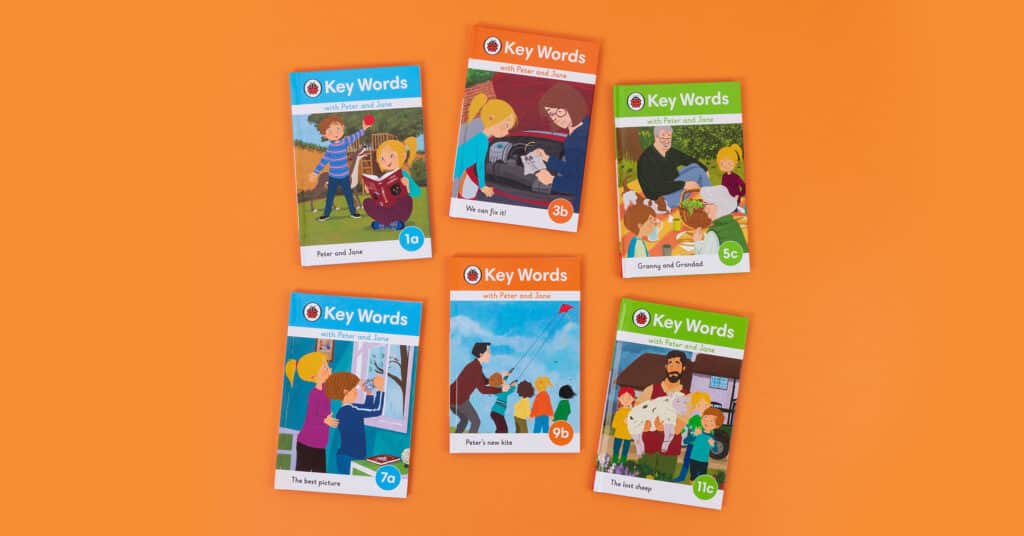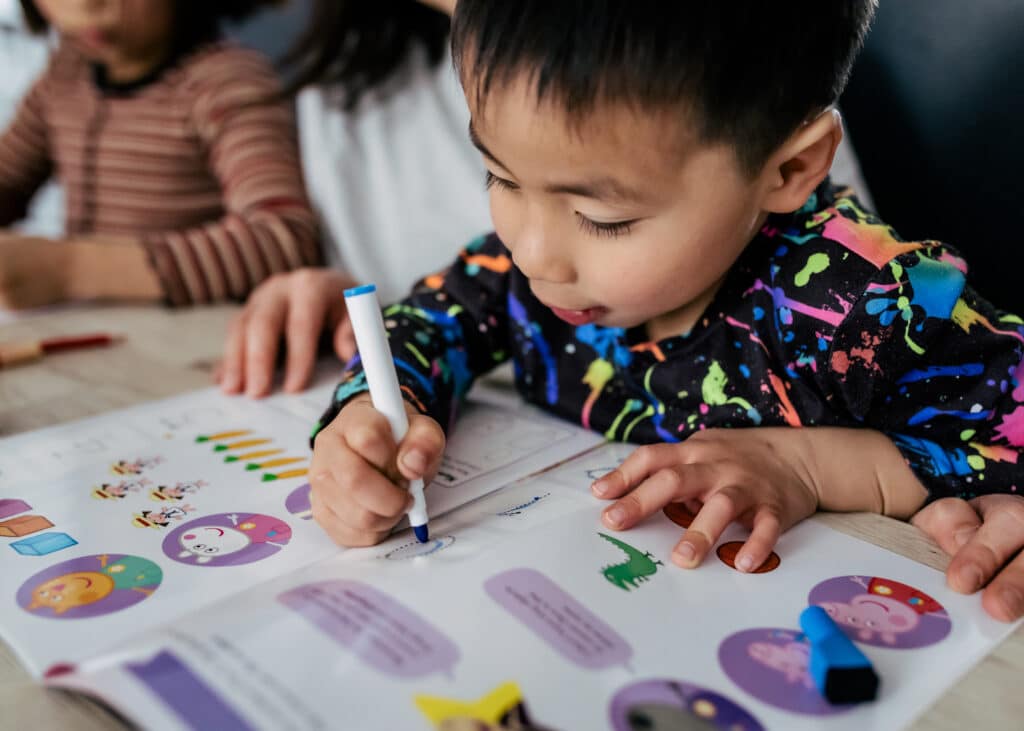Top tips for practising reading, writing and number skills at home
Learn with Ladybird is a treasure-trove of fun activities to help your child learn early reading, writing and number skills – ideal for children aged 3 to 7.
More about Learn with Ladybird
Learn with Ladybird is based on the curriculum that your child will follow at pre-school and at school, so the books are ideal to get your child practising these important skills at home. Each Learn with Ladybird book has parent notes and tips to help you help your child – and all the answers are at the back! As well as the fun games and activities, the books include features that help your child keep track of their own learning, so they can see their skills building up over time. The charities Pace and Child Autism UK were deeply involved in the development of the series, so disabled and autistic children will see themselves accurately and inclusively represented in the books. Learn more about the series.
Alongside Learn with Ladybird, there are many other fun ways to support your child’s learning and build on the work they’re doing at school or nursery! Let’s look at some easy and effective activities that you can do at home to boost your child’s reading, writing and number skills.
Reading Activities
- Sing or say some nursery rhymes and songs together. Pause at the end of a line and let your child add the rhyming words! Listening out for rhymes helps your child tune into the sounds in words.
- Take turns to think of a letter and say its sound. How many things can you find that start with that letter sound? This helps your child link letters to the sounds they make, and see how letter sounds build up to make words.
- When your child’s ready to start reading, take it slowly. Support them to sound out the letters in each word and then blend them together to read the whole word. Reading can be tiring for young learners, so go at your child’s pace and stop when they’ve had enough!
- Don’t underestimate the power of sharing stories! Even if your child can read independently, aim to read to them every day. Snuggling up with you, and sharing a story that might be tricky to read by themselves, is a perfect way to discover the joy of reading!
Writing Activities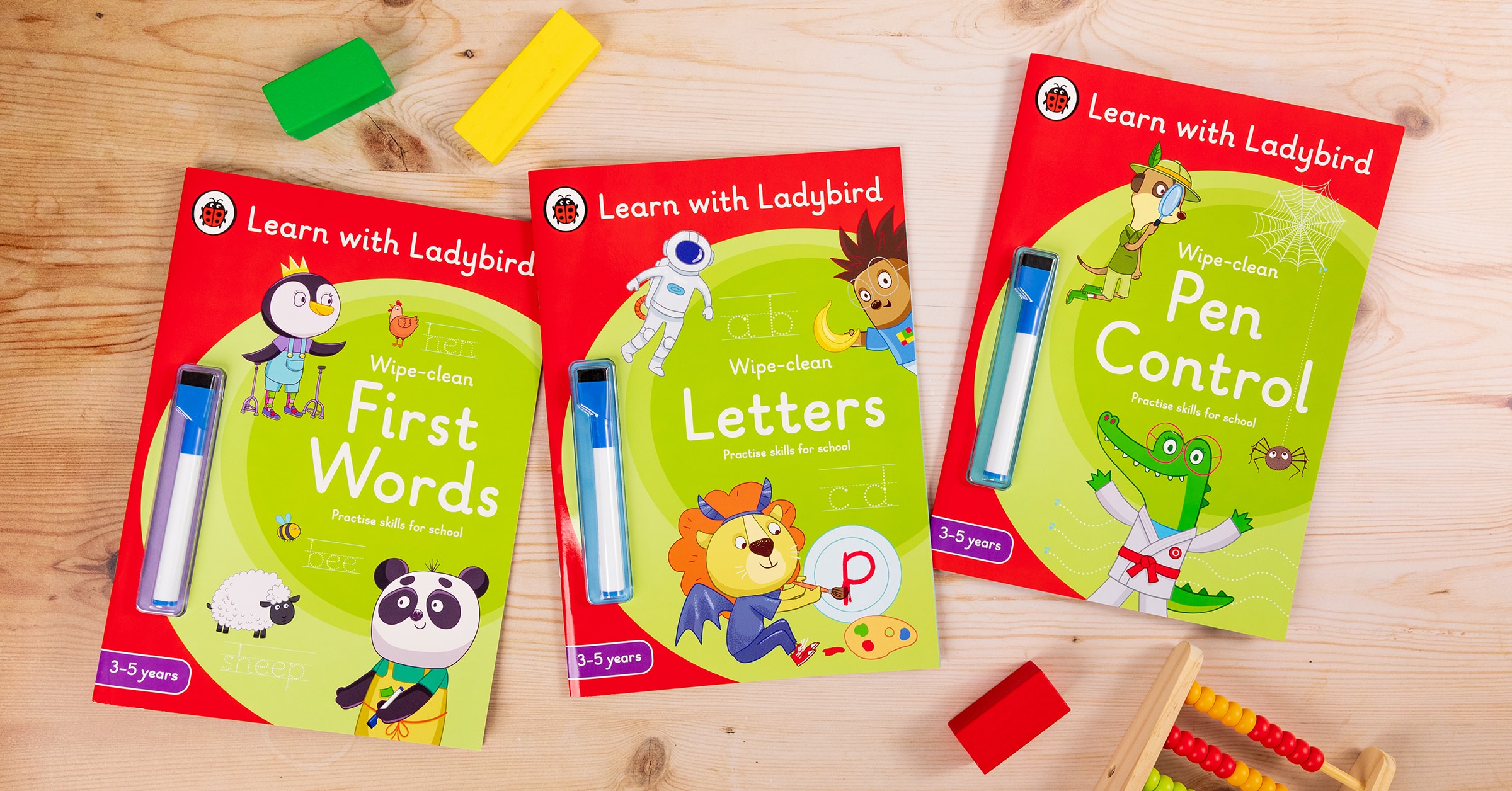
- Even before your child starts to learn to write, give them lots of practise with dot-to-dot and colouring sheets. The most important first step to writing is learning to hold a pen or pencil properly and control it! So any practice with colouring, drawing and tracing lines is helpful.
- Forming letter shapes correctly can take a lot of practice. So give your child some different fun opportunities to make letter shapes. They could finger-paint the letter shapes using thick paint or shaving foam on a plastic sheet, or draw them in sand with their finger or a stick. They could make the letter shapes with modelling clay. You could even make a batch of cookie dough and let them make letter-shape cookies!
- Look out for opportunities to write together throughout the day. If you’re going shopping, let your child help you write the shopping list, and then tick off the items as you buy them. Very young children can write a pretend shopping list, making marks in their own way. Older children can use their knowledge of phonics and spelling to have a stab at writing the words correctly!
Maths Activities

- Take every chance you get to count things! Fruit in the fruit bowl, plates on the table, cars on the street, birds on a tree – it all helps get your child thinking about numbers and how we use them to count things.
- Encourage your child to make patterns when they’re playing with construction toys. Can they make a repeating pattern with two different colours of bricks? Can they say which of two towers is the tallest or shortest?
- Play Numberfingers – take turns to say a number from 1 to 10. Who will be the quickest to show the correct number of fingers?
- Play Make 10 – get a bowl of small items such as raisins, blocks or pasta. Take turns to put down a number of items, between 1 and 9. How quickly can the other person add the right number of items to make up 10? Once your child is good at this, try making numbers to 20!
- Play Take It Away – start with 10 or 20 small items. Take turns to say a lower number – e.g. 7. How quickly can the other player take away the correct number of items to leave 7?
- Play Hidden Numbers – put 10 or 20 small items like raisins or pasta in a bag. Take turns to remove some of the items from the bag and place them on the table. Can the other player work out how many items must be left in the bag?
All these ideas will help you give your child a good grounding in the skills they need to succeed at school!
Resources
Tags
Activity ideas | English as a first language | home learningLevels: Beginner | Starter

